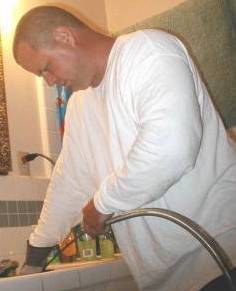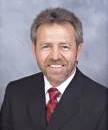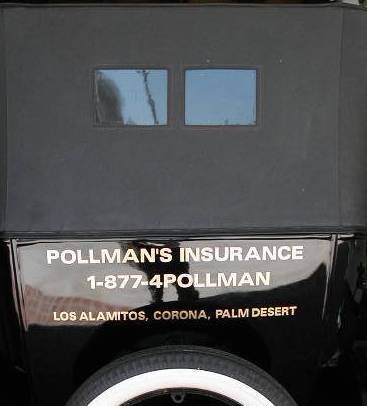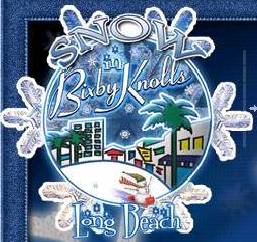|
News CA Air Resources Board Submits Filed Comments -- And L.A. Times Comments Editorially -- on LB LNG Draft Environmental Impact Document
(Nov. 28, 2005) -- The State of California's clean air agency and the region's largest newspaper have commented -- the former in a formal government filing, the latter on its editorial page -- on a draft Environmental Impact Report (EIR/EIS) produced by the Port of LB and the Federal Energy Regulatory Commission (FERC) regarding a proposed 80+ million gallon Liquefied Natural Gas (LNG) facility in the Port of LB.
In comments filed Nov. 21 with FERC (and posted on the agency's website), the CA Air Resources Board (CARB) says the LNG project's EIR/EIS should address what CARB calls "the potential adverse impact that may occur resulting from the quality of LNG" that the would be imported into California and also address mitigation of emissions associated with the proposed project itself.
Meanwhile, in a November 28 editorial titled "A Terminal Case," the Los Angeles Times comments that a Sandia National Labs LNG report [not specific to the PoLB site] and an expert retained by the CA Public Utilities Commission [specifically commenting on the PoLB site] reached conclusions differing from a firm retained by the Port of LB to study the LB risks (appended to the Port/FERC EIR/EIS).
"The size of the blast is just one of the unknowns. What degree of heat is acceptable at what distance? What are the odds of a terrorist attack or catastrophic accident? Such questions make it easy simply to dismiss the Long Beach terminal as too risky. But there is too much riding on the decision for that. Instead, Californians have a right to demand better answers," the Times editorializes, concluding, "The final version of the project's environmental study is supposed to address public comment, so our comment is: Give us more answers about safety and reconcile the various studies on explosions or explain why they're so different."
Neither the Times editorial nor the CA Air Resources Board EIR/EIS filing oppose the PoLB-sited project.
The CA Air Resources Board is the third CA state agency to weigh-in publicly on the LNG facility which a Mitsubishi/Conoco-related entity, Sound Energy Solutions, seeks to build and operate in the Port. As previously reported by LBReport.com, in early October the CA Public Utilities Commission (CPUC) filed a motion with FERC (separate from the EIR/EIS process) opposing siting the facility in the Port. CPUC has requested a hearing on testimony by LNG expert Jerry Havens, Ph.D (retained by CPUC) estimating a potential risk area at least roughly 3 miles from the PoLB site. (CPUC's motion is pending; the LNG applicant said it's trying to validate the CPUC expert's data and criticized CPUC for filing its motion prior to release of the EIR/EIS).
Earlier, the CA Energy Commission submitted to FERC (in a procedure under the newly enacted federal Energy bill) an advisory report recommending use of a specific mathematical standard (1.5 Kw/m2) to calculate the distance at which people might be affected by heat from a fire in a catastrophic event. FERC/PoLB chose not use that formula and instead released the draft EIR/EIS using a different standard (5 Kw/m2) (accepted by the U.S. Dept. of Transportation) producing a conclusion that effects would be basically limited to the project site or nearby.
Project critic Bry Myown of LB Citizens for Utility Reform commented for LBReport.com, "We don't need more studies to reconcile guesswork, we need siting standards. The Coast Guard must promulgate exclusion zone regulations to separate LNG tanker traffic from surroundings where pool fires could be catastrophic. The Department of Transportation must revise thermal radiation standards that currently allow burns to human skin within 20 seconds. The Port of Long Beach must be made to take responsibility for confining the harmful impacts of all of its operations -- just as any other slumlord would be."
Spokesman for LNG project applicant Sound Energy Solutions, Jeff Adler, noted that the draft EIR/EIS wasn't produced by the company but by the Port of LB and FERC...and both agencies are required to respond in writing in the final EIR/EIS to comments received. "What's taking place now is part of the EIR/EIS process," Mr. Adler noted, adding "We look forward to a final EIR/EIS that responds in writing to comments submitted, whether from government agencies or individuals, whether in writing or in public EIR/EIS meetings."
Two LNG EIR/EIS meetings have already taken place in LB (NLB and downtown)...and two more are scheduled later this week (Nov. 30 @ ELB's Millikan High School and Dec. 1 @ WLB's Cabrillo High School; the meetings begin at 6 p.m.) The EIR/EIS is posted on the Port of LB and FERC websites. To access it, click here.
In its formal EIR/EIS written comments, the CA Air Resources Board said in pertinent part:
From an air quality perspective, all emissions associated with the
project must be included in the analysis. Directly associated emissions are those that
would not occur "but for" the project. With the proposed LNG project, vessel emissions
of visiting tankers are direct emissions. These emissions must be counted in
determining the impact of the proposed project and whether the impact has the potential
to have a significant adverse affect on air quality.[footnote]
[footnote text: Counting vessel emissions in an LNG project is directly analogous to counting vehicular emissions that are part of an overall project in a land-bued project. Courts have struck down the CEQA [CA Environmental Quality Act] analysis in cases where such vehicular emissions were not addressed. [citation omitted]...The mere fact that a project may comply with an applicable regulatory standard for a stationary source dose not negate the need to consider the emissions from all vehicular sources associated with the project. [end footnote text]
We understand that South Coast Air Quality Management District's (SCAQMD)
regulations require the offset of emissions from the stationary aspects of the proposed
project. However, all emissions associated with LNG carders and support vessels
operating within California Coastal Waters do not appear to be addressed...
...It is not clear from the discussion in the Draft EIS/EIR that all
emissions from marine operations within the boundaries of California Coastal Waters
have been considered. It also appears that the estimated NOx emissions of 46 tons per
year may be underestimated. ARB staff's review of a competing proposed California
LNG project using LNG carriers and support vessels fueled exclusively on boil-off LNG
and natural gas indicates that estimated NOx emissions from madna operations are
significantly greater. [footnote: cites draft EIR/EIS for Cabrillo Port LNG Deepwater Port, Oct. 2004] Therefore, the draft EIS/EIR should provide more detail in describing how emissions were calculated. As discussed above, we believe that emissions within California Coastal Waters can reach the California coastline and add to the air pollution burden of downwind regions (e.g., South Coast Air Basin) and should be addressed in the Draft EIS/EIR as required by CEQA.
For purposes of this project, ARB staff believes it is appropriate to mitigate the
emissions from marine operations that occur within 25 nautical miles from the California
mainland coastline. We believe this will address the majority of emissions from the
proposed project and maximize the potential on-shore benefits. Possible mitigation
measures that may be applicable and should be considered include, but are not limited
to, retrofit of the engines of vessels that regularly operate in California Coastal Waters
with selective catalytic reduction or the conversion from diesel fuel to natural gas.
Although ARB has not established relevant significance criteria, these emissions clearly
exceed the "significance threshold" of 55 pounds per day for NOx emissions that the
SCAQMD, the District most affected, has established.
The CA Air Resources Board comments also state:
[M]ost LNG on the world-wide market has higher energy content than
the natural gas to which California is accustomed. Available date indicates that
significant differentials in energy content of natural gas can adversely affect the
operation and emissions of stationary and mobile sources that are fueled on natural gas
(e.g., higher energy content natural gas typically generates higher levels of oxides of
nitrogen (NOx) emissions). We understand that Sound Energy Solutions (SES) has
proposed to remove portions of the natural gas liquids (NGLs) from the LNG in order to
meet the SoCal Gas Rule 30 specifications for pipeline natural gas and the LNG
specifications for motor vehicle fuel established by ARB. (Please note: ARB does not
have LNG specifications but rather compressed natural gas (CNG) specifications for
motor vehicle fuel.) However, meeting these standards does not ensure that the quality
of the natural gas after removal of NGLs will not adversely impact the quality of natural
gas that is consumed in the South Coast Air Basin.
Historically, natural gas in the South Coast Air Basin has on average an energy content
of about 1020 BTU/scf and a wobbe number of about 1332. [footnote omitted] This is significantly lower than the upper range of energy content and wobbe number that is allowed under the existing SoCal Gas Rule 30 specifications. Also, it is possible to comply with the
existing ARB CNG specifications with natural gas that has higher BTU and wobbe
values than the existing averages for the Basin. If the proposed project were to produce
natural gas at the higher end of the range of these specifications, NOx emissions could
increase in the South Coast Air Basin. Therefore, the draft EIS/EIR should recognize
the historic quality of natural gas used in the South Coast Air Basin and assess possible
impacts, if any, that may result from the use of LNG-derived natural gas. If significant
adverse impacts are identified, mitigation measures should be implemented
(e.g., require further NGL's removal to a level that would not significantly increase the
average energy content or wobbe number of natural gas in the South Coast Air Basin).
In regards to the mitigation of emissions that are associated with the proposed project,
we believe all emissions that could adversely affect California's air quality should be
mitigated to the extent feasible.
In its filing, CARB staff notes that it supports "efforts to secure natural gas supplies to
meet California's current and future natural gas demands. Natural gas is a clean air
strategy that has significantly contributed to the air quality improvements California has
achieved. We believe that natural gas needs to continue to be a clean air strategy in
order for California to meet our air quality goals."
At the same time, the Air Quality section of the Port-FERC EIR/EIS acknowledges that "Air emissions associated with the Long Beach LNG Import Project are [as with other LB area projects] expected to remain significant after implementation of SES’ proposed control measures and the Agency Staffs’ recommended mitigation measures...During operation, the project’s net emissions after SCAQMD-required emission offsets and implementation of SES’ proposed control measures would exceed the daily SCAQMD significance thresholds for NOx, ROC, PM10, and SOx. As a result, the existing and proposed projects are assumed to have both individually and cumulatively significant impacts on air quality."
The EIR/EIS continues:
Most of the impacts on air quality associated with the various projects would be attributable to emissions from mobile sources (e.g., construction equipment, terminal operating vehicles, marine vessels, trains, trucks, and on-road vehicles). Ongoing programs administered by the EPA, the CARB, and the SCAQMD would lessen those emissions by encouraging, and in some cases mandating, measures such as alternative fuels, reformulated diesel fuels, cleaner engines, and ride-sharing. In addition, the proposed project would make an alternative cleaner burning fuel (i.e., LNG) more available for distribution locally to fuel LNG-powered vehicles. As a result, there is a potential for air quality benefits associated with the proposed project because LNG-powered vehicles have lower emissions than diesel-powered vehicles.
Nevertheless, the cumulative projects represent additions of potentially significant and unavoidable emissions in the SCAB [South Coast Air Basin].
As discussed in section 4.9.7, a Health Risk Assessment of toxic air contaminant emissions on humans was conducted for the Long Beach LNG Import Project in accordance with SCAQMD Rule
1401. The Health Risk Assessment concluded that the proposed project would not individually exceed cancer risk level significance thresholds established by the SCAQMD for toxic air pollutant health impacts; however, the total carcinogenic risk in the SCAB and the Port areas currently exceeds thresholds of significance based on data gathered in the MATES II Study. Therefore, even though project-specific toxic air pollutant health impacts would not be significant, it is likely that the incremental increase in the cancer risk level for toxic air pollutants as a result of the proposed project would contribute to an existing cumulatively significant health impact in the south-central Los Angeles area, the harbor area, and near
freeways.
Return To Front Page
Contact us: mail@LBReport.com
|

DrainPros: Unclog Drains + Full Service Plumbing, Locally Owned Pros. Info, Click Here
 Mike & Kathi Kowal know Los Cerritos, Bixby Knolls, Cal Hts. and beyond. Click to learn more Mike & Kathi Kowal know Los Cerritos, Bixby Knolls, Cal Hts. and beyond. Click to learn more

Wedding Entertainment Planning Is His Specialty. Bill Lovelace Delivers Personalized, Wedding Event Services. Get Info, Click Here
 Jax Bicycle Center. Huge bike choice + everything you need for a great ride. Jax Bicycle Center. Huge bike choice + everything you need for a great ride.

Preserve Your Family's Most Precious Photos and Videos on DVD. Click For Info

Carter Wood Floors, a LB company, will restore your wood floor or install a new one. Enhance your home. Click pic.
|










